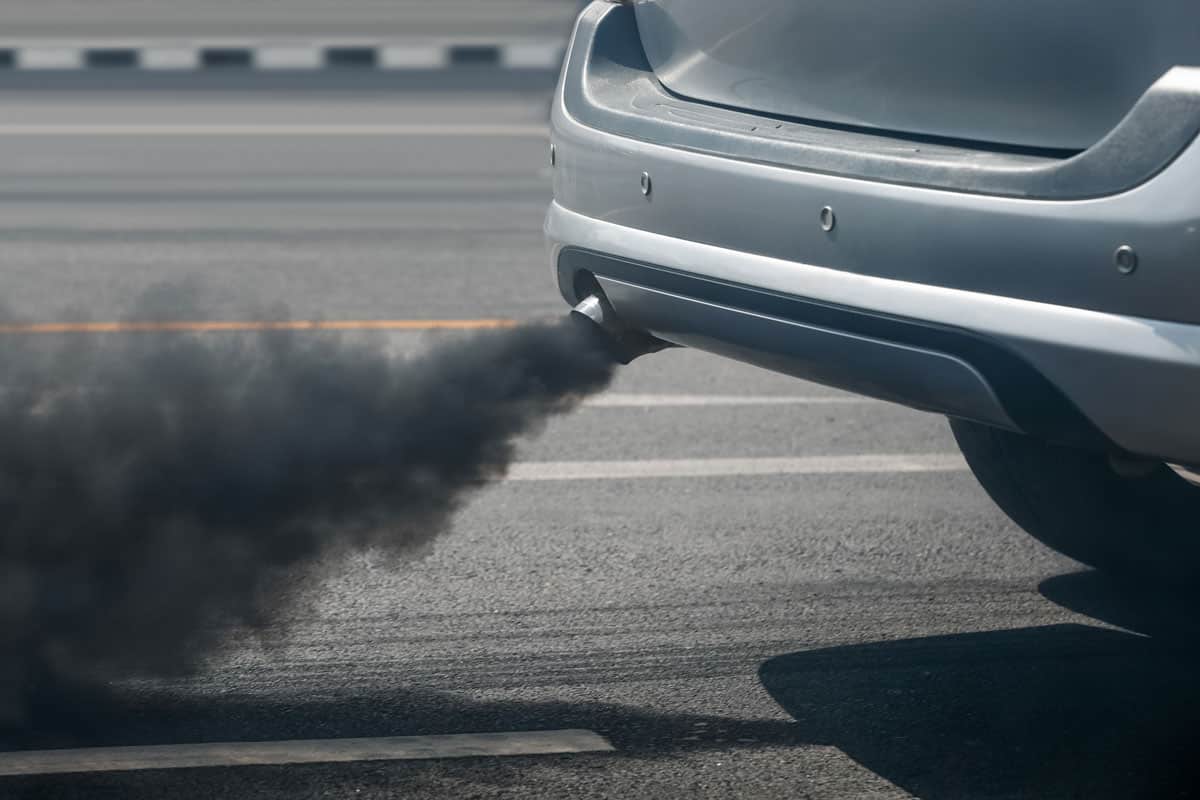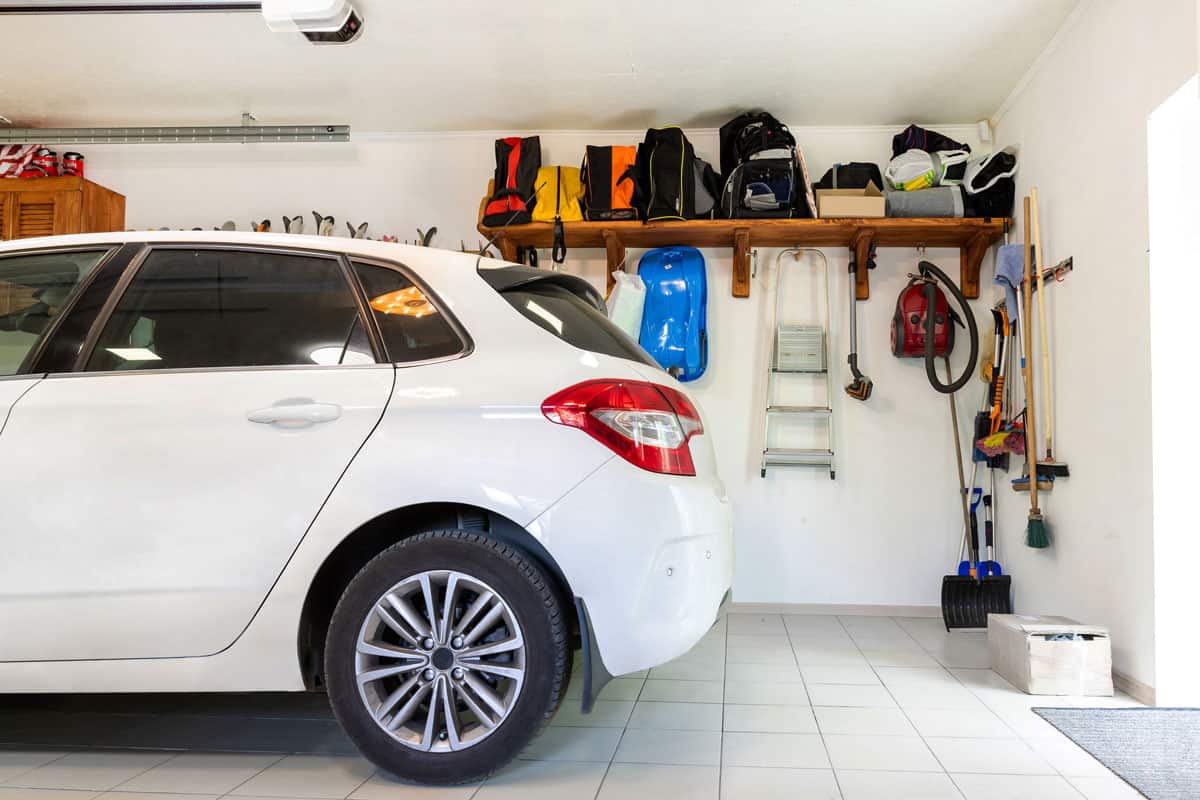Does your garage lack a way to vent car exhaust? Do you want to know how to install an effective vent? You’ve come to the right place, for we have researched this question, and we have the answer for you.
Depending on your location, there are local building codes that have specific requirements for garage ventilation. Check your area if there is an existing code that you need to follow for the installation of a ventilation system for your garage.
Let’s talk more about the installation of a ventilation system for your garage in the succeeding sections. Learn about important points in the installation of a garage vent below.
Read on!
![home-suburban-car-garage-interior-wooden-closet, How To Vent Car Exhaust In Your Garage [Safely & Effectively]](https://vehq.com/wp-content/uploads/2022/10/How-To-Vent-Car-Exhaust-In-Your-Garage-Safely-Effectively.png)
The Danger Of Exhaust Gases
Internal combustion vehicles produce energy through the combustion of a mixture of air and fuel. The fuel that vehicles use can range from gasoline, diesel, natural gas, fuel oil, biodiesel blends, and coal. However, regardless of the type of engine and the fuel that it uses—including electric vehicles—the production of energy always produces exhaust fumes.
The only difference in electric vehicles is that they don't emit exhaust themselves. The exhaust is instead created by the production of electricity that the electric car uses.
Exhaust Manifold
Internal combustion engines have an exhaust manifold where the exhaust gases from combustion exit the engine.
Each cylinder has its own exhaust pipe or exhaust head pipe. The head pipes commonly converge to a collector. The collector leads the exhaust gases out of the engine.
Exhaust headers are commonly modified with a ceramic or heat-resistant finish. Another modification is to insulate the exhaust manifold.
Both modifications reduce the radiant heat from the exhaust system that goes back to the engine. This helps maintain the temperature of the engine.
What are exhaust fumes made of?
The exhaust fumes from your internal combustion vehicle are a mixture of different gases and particulate matter.
Particulate matter—or particulate pollution—is a combination of dust, soot, dirt, smoke, and small drops of liquid. Particle pollution is harmful to human health.
The bigger particles are irritants to the eyes, nose, and throat. Smaller particles are even more dangerous because they can get deep into the lungs. When oxygen from the lungs mixes with blood, some particles are small enough that they can mix with the blood.
Carbon Dioxide

Carbon dioxide is one of the gases that you can find in the exhaust gases of an internal combustion engine.
It is a colorless and odorless gas that is present in small quantities (0.037%) in the air that we breathe. It is not harmful to our health at this low level. However, as the concentration of carbon dioxide rises, it starts to cause dizziness, headaches, confusion, and unconsciousness.
Carbon dioxide is heavier than air. This means that it won't rise in the air like most other gases. Thus, air “floats” on carbon dioxide.
If the concentration of carbon dioxide rises, the concentration of air will drop. This can cause asphyxiation because you lose access to oxygen when carbon dioxide pushes the air up.
Carbon Monoxide
Another gas found in exhaust fumes from cars is carbon monoxide. And just like carbon dioxide, it is colorless and odorless. You wouldn’t know if you’re surrounded by carbon monoxide.
Carbon monoxide is especially poisonous to humans. The symptoms of carbon monoxide poisoning include dizziness, headache, weakness, upset stomach, vomiting, confusion, and chest pain.
Breathing in carbon monoxide can produce symptoms similar to the flu. Breathing in carbon monoxide can cause you to lose consciousness and kill you.
Carbon monoxide replaces the oxygen in the body and accumulates in the blood. Carbon monoxide in red blood cells can lead to serious tissue damage.
It is especially dangerous once it gets into your house. It can kill sleeping or drunk people before they experience any symptoms.
At least 430 Americans die in the US annually from carbon monoxide poisoning. Around 50,000 people in the US visit the emergency department due to carbon monoxide poisoning each year.
Benzene
Benzene is a colorless liquid that has a sweet odor. It is a common component in a lot of chemicals that's commonly found in industrial and manufacturing plants. Benzene is also a component of crude oil and gasoline.
In its liquid form, benzene will rapidly evaporate once it gets exposed to the environment.
One of the most common sources of benzene in the environment is vehicle exhaust. Since benzene is a component of gasoline, the evaporation of gasoline releases benzene into the air. The refining of gasoline also releases benzene into the environment.
Breathing benzene is harmful to human health. Even skin and eye contact can expose you to its adverse effects.
Short-term benzene exposure causes eye, nose, and throat irritation. This can lead to coughing and breathing difficulties.
A higher concentration of benzene causes the airways to swell. This will also lead to fluid build-up inside the lungs.
Long-term exposure (exposure of more than a year) to benzene causes the bone marrow to produce fewer red blood cells. This can lead to anemia and excessive bleeding that increases the chances of getting exposed to an infection.
Benzene can cause the ovaries to shrink in women who breathe high levels of benzene. It can also cause cancer of blood-forming organs in humans, according to the DHHS (Department of Health and Human Services).
Sulfur Dioxide
Sulfur dioxide is also among the components of a car’s exhaust gases. It is a colorless gas with a particular smell. Volcanic activity is the most common source of sulfur dioxide in nature.
Burning fossil fuels is also a source of sulfur dioxide. Moreover, power plants also produce sulfur dioxide in the production of electricity.
Sulfur dioxide inhalation can lead to various respiratory illnesses as well as worsening preexisting heart and lung problems.
How to vent your garage safely and effectively?

Considering the different harmful gases that you can find in the exhaust gas, it is important to ensure that your garage can effectively vent them out.
Another important factor to consider is that garages are also storage areas for fuel and other chemicals that can produce their own exhaust fumes. An example is benzene from fuel evaporation.
Ideally, a garage should be a separate building from the house. Unfortunately, this is not always possible.
A separate garage means you don't have to worry about creating an air seal on the common wall. The air seal between the garage and the living areas of your house helps prevent harmful gases from entering your home.
Small Garages

A small garage (big enough only for one car) can be ventilated naturally. The natural flow of air will allow exhaust gases to escape into the environment.
There should be one opening for air intake and another for air going out of the garage.
The opening should be one to two feet from the floor on the wall where the exhaust of the car is facing. Install the other opening on the opposite wall, one to two feet from the ceiling.
Cover the vents with a layer of the removable screen to prevent pests and small animals from entering your garage. A removable screen will allow you to regularly clean the screen to maintain airflow in your garage.
Larger Garages

Garages that are large enough for a single car and some tool benches will need to install one or two exhaust vents.
Ideally, there should be two intake vents on the wall facing the front of the car. One intake vent should be close to the floor, and the other should be close to the ceiling. Cover the intake vents with a removable screen.
Install two exhaust vents on the opposite wall, close to the exhaust of your car. Similar to the intake vents, one of the vents should be close to the floor, while the other should be close to the ceiling.
Remember that some exhaust gases are heavier than air. The exhaust vent close to the floor will ensure that there will be no build-up of exhaust gases at floor level. The exhaust vent near the ceiling will be responsible for light exhaust gases.
Connect the two exhaust vents to a duct. Direct the duct upwards and install a ventilation fan to pull air out of your garage.
Computing For The Exhaust Fan Capacity
Get the volume of your garage in cubic feet by measuring the length, width, and height of the garage in feet and multiplying all three.
Once you get the total volume of your garage, multiply it by the ACH or the “air change rate per hour” or the “air changes per hour.” ACH is the total number of times that the air in a space is changed.
There are recommended ACH per type of room. For a garage, the ACH should be between 6 to 10.
When computing the CFM (cubic feet per minute) of your ventilation fan use an ACH of 8.
Thus, multiply the volume of your garage by 8, then divide it by 60. The answer is the CFM of the ventilation fan that you need to install.
iLIVING 12-Inch Wall Mounted Shutter Exhaust is available on Amazon through this link.
Conclusion

Venting a garage is important to prevent the buildup of automotive exhaust gases that can be harmful to health.
If you enjoyed reading this article, you might find the articles below equally enjoyable to read:
Should You Back Your Car Into The Garage?
What’s The Right Garage Door Size For A Truck [Full-Size And Midsize]?

